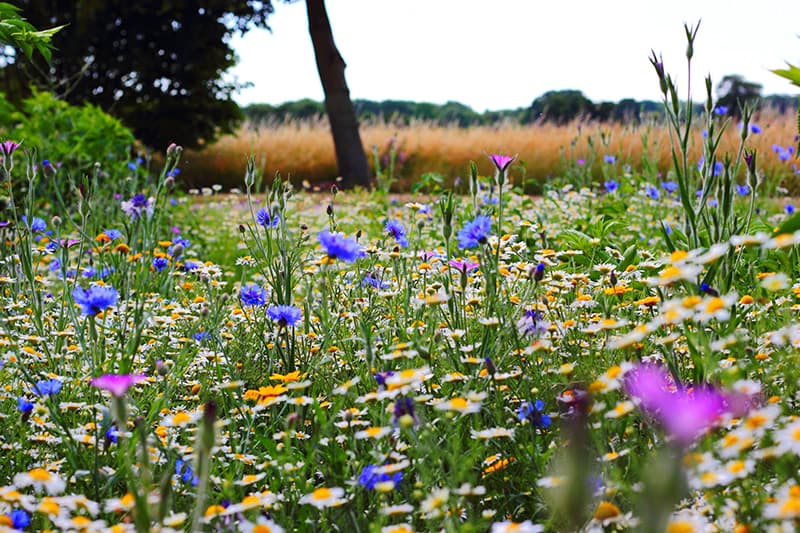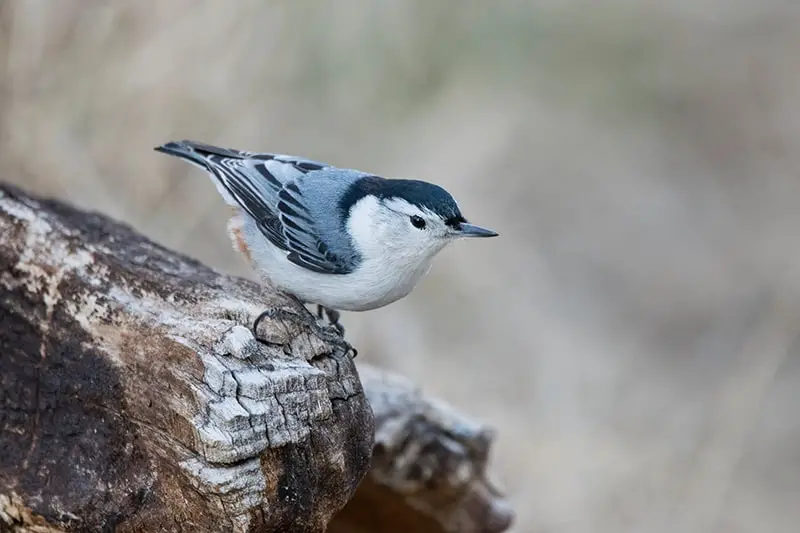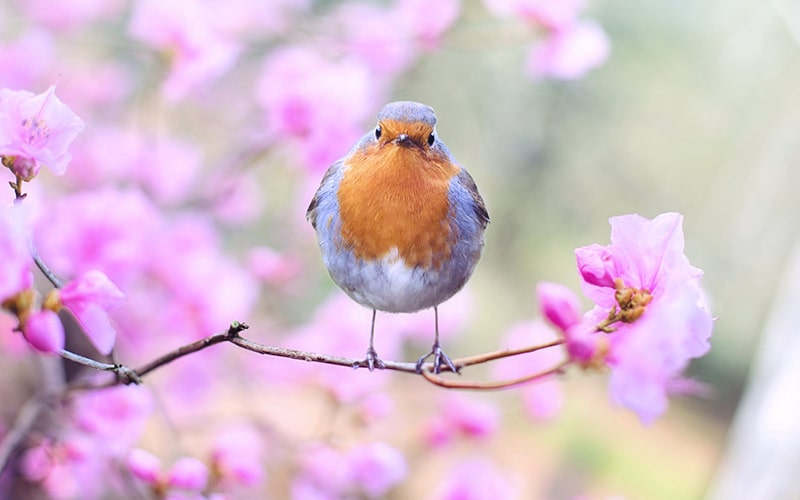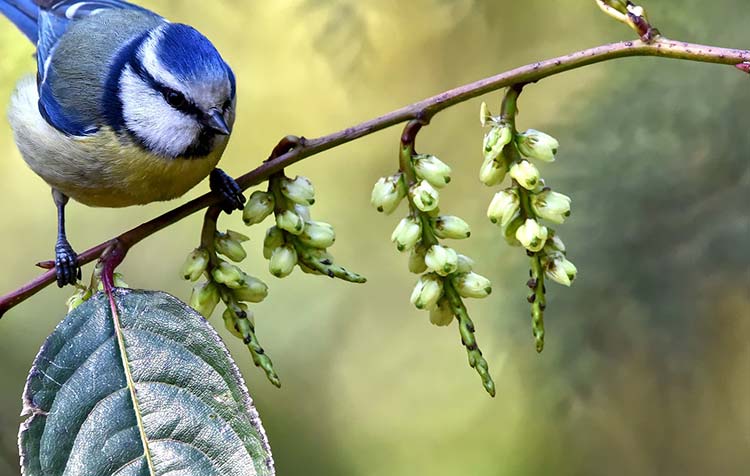How can you actually make your own Garden for birds design? If you're looking for tips on how to create a bird-friendly garden paradise, you've come to the right place. What could be more soothing than lying in your hammock and listening to the birds chirping in your own greenery! Simply wonderful! But for this you have to get away from the pure rock garden, away from slick mowed green spaces. And towards a garden that is close to nature.
How this works and how you can make your garden bird-friendly, you will now learn in this article.
Notice: You don't have to implement all the tips at once. Think of the design of your garden as a step-by-step process and not as a rush job. By the way, you can get even more input for a basically environmentally friendly garden in the article about the sustainable garden design.
What do birds actually need in the garden?
Lage, Lage, Lage! Das denken sich auch Vögel bei der Standortauswahl. Doch damit wir unseren Garten vogelfreundlich gestalten können, sollten wir erst einmal in Erfahrung bringen, worauf unsere gefiederten Freunde überhaupt abfahren. 😉
Here, without further ado, are some things that are essential in the lives of birds:
- Food source: Birds need natural food sources and nothing from a can! Seeds, fruits, worms, spiders and insects! This natural food comes but only if it also finds food in your garden itself.
- Drinking water source: Ponds, liquid, lakes - or even a simple and regularly refilled water bowl. Birds like to make themselves comfortable where they find drinking water.
- Shelter: Whether it's stone walls, roofs, trees, shrubs, hedges, birdhouses, birds need a permanent shelter to breed and protect themselves from predators like martens or cats.
- Care options: Just like us, the birds clean themselves regularly. This is important against diseases. A bird-friendly garden therefore also offers them the chance to clean themselves.
- Nest building material: In a pure, paved-over rock garden, birds can hardly find nesting material. So a garden for birds should also offer them shrubs, small branches and the like.
- Seating options: Whether for courtship, singing, or simply as a vantage point for hunting insects. Birds also need a vantage point in your garden....
Consider this information as a preliminary brainstorming, in order to be able to adapt the following tips and own ideas individually at any time.
15 tips for a bird friendly garden
Now that you know roughly what birds need, we can comfortably move on to the practical tips part of bird-friendly garden design. Implement the following ideas one by one to make it even easier for birds to decide to settle in your own garden.
1. create compost heap
If birds can't get their fill in your garden, they'll fly on. But a compost pile attracts lots of microbes like worms, beetles, mosquitoes, and spiders, which provide a tasty food source for birds. Learn more at Create compost correctly.
2. plant trees and protective hedges
Lege Bird-friendly trees, Hecken und Sträucher an, in denen Vögel Nahrung und Unterschlupf finden können. Ein naturnaher Garten sollte dabei Ecken und Kanten haben und muss nicht akkurat nach „deutscher Ordentlichkeit“ angelegt werden.
These are especially recommended for a garden with birds:
- Rowanberry (red rowan is eaten by many species of birds).
- Hawthorn (loved by hundreds of species of insects).
- Flourberry (with flowers and berries)
- Firethorn (with flowers and protective thorns)
- Red honeysuckle (blooms in spring)
- Rock pear (fruits and flowers)
- Peacock (fruits and flowers)
- …
Can you think of any other bird-friendly plants? Then just write me a comment with the appropriate reason.
3. offer birds a permanent source of water
Birds and also their food supply need water. With a garden pond you definitely provide a good basis for our feathered friends to have a safe source of drinking water and also to bathe regularly.
Build birds but best also still a small "Swimming pool"The bird feeder is made of a shallow clay bowl that you hang from a tree. But put a stone in it so that the birds can get out comfortably.
Tip: Since transparent panes cannot be perceived as an obstacle by the animals, it repeatedly happens that Birds flying against windows. I explain what you can do about it in the linked blog post.
4. talk to your neighbors
Your small patch of greenery looks pretty uninteresting for birds, from outside around are only flat, lifeless rock gardens without food sources. Therefore, it may also be worthwhile to talk to your neighbors and show them the Making advantages of a garden with birdsong palatable. Feel free to forward them this article with tips for a bird-friendly garden!
5. plant insect friendly flowers
In addition to insect-friendly trees and hedges, such as hawthorn, a vibrant garden also needs Wildflower meadows, perennials, summer flowers or Climbing plants.
Here are some plants that attract many insects:
- Globe Flower
- Dog Rose
- Meadow Sage
- Sweet Clover
- Ribwort
- Common Catchfly
- Turk's Crescent Lily
- …
Can you think of any other insect-friendly plants? Then just write me a comment again!
6. give free rein to the wildflower meadow

A few wild corners make your garden especially insect- and thus bird-friendly. Let nature take its course and do not maintain everything super neat. Foreign cultivated roses do not bring so much. Native wildflowers on the other hand, attract insects and birds. The rule is: the wilder, the more natural, the better!
Even flowering weeds can be allowed to grow. Detach yourself from the thought of "what your neighbors might think about your garden". In the end, you're just the trailblazer in your neighborhood.
7. offer birds food all year round
Birds need food if they are to thrive in your garden.
Natural food sources such as fruit-bearing woody plants like rowan berries or black elderberry, as well as insect-friendly plants like hawthorn or rose hedges are already very helpful.
But especially in winter the buffet for birds is not as richly covered as in the warmer season. Offer them therefore also Soft lining (e.g. for robins and starlings) and Grain feed (e.g. for siskin and sparrow). It is best to do without plastic nets, in which birds can become dangerously entangled. Buy or build yourself rather a Bird feeder spiral for dumplings made of metal.
If you offer birds permanent food, they will also fight together with you against bugs. Win-win!
Tip: Do you already know how Feeding hedgehogs correctly? For example, you must not drink milk. You can read more in the linked article.
8. offer piles of leaves and dead wood
"Chaos is welcome, order has failed". - this also applies to a bird-friendly garden! You can leave piles of leaves in the garden a little longer, because they are Shelter for hedgehogs but also for many small animals, which are a source of food for birds.
Also dead wood piles from old tree trunks and thicker branches are useful. Wrens or wagtails, for example, like to breed in them.
9. keep your hands off pesticides!
Pesticides are pure poison. Not only for insects, but also for the animals that eat them. With pesticides, you are ultimately also affecting the health of birds.
Let the attracted birds help you in the fight against pests! The great tit, for example, is totally into aphids! Birds are your allies - you just have to give them the chance.
Tip: I have written you another separate article about Animal welfare in everyday life where you can learn how else you can help animals. Look gladly times purely!
10. design the garden floor with different height levels
A small hollow with soft sand for sand bathing provides a grooming opportunity for many birds. However, different height levels also create Sometimes a little cooler, shadier and sometimes sunnier, warmer regions in the garden. This gives birds and of course many other animals the chance to make themselves comfortable at the individually preferred temperatures.
11. create perching areas for birds

A bird-friendly garden also provides a "stage" for the peacocks. For example, for courtship and song performances. But of course also to get an overview for foraging. For this, they need self-built or natural perches such as Trellis, fences or stakes. In an ideal garden for birds should find such seating. Also a high pile of dead wood, as in the picture, can help.
12. keep a domestic cat or no cat
Cats are an enemy of birds. Even if this sounds sad for cat lovers, of course, in a bird-friendly garden in the best case no cats should sneak around at all. Of course, you can not completely avoid this. That's why birdhouses should have metal protection against predators like cats, for example.
If you want to keep a cat, then for the protection of birds it is best to become a domestic cat.
13. create opportunities for a water and sand bath
Birds need to be able to clean themselves. For this they need above all the chance of a Water bath. Ideally, it should be placed in such a way that cats and other bird enemies can't sneak up there quietly. Also make sure that you clean it daily to prevent diseases among the birds.
As mentioned earlier, you should also offer a small hollow with soft sand in your bird-friendly garden. Titmice and sparrows, for example, love to cover their plumage with a Sand bath get rid of pesky parasites.
14. build birds a home
If the nature in your garden does not yet offer so many nesting opportunities for birds, you can help the animals with a purchased or homemade box to the Brood or also for the warm Hibernation help out. Don't give predators like martens or cats a chance by installing a metal guard at the round entrance.
Tip: Ideally, birdhouses are located where the animals can find food directly. For example, a few meters above a wildflower meadow.
15. offer diversity to birds
The larger and more diverse your garden is, the more microhabitats are created there. The more microhabitats there are, the richer the food supply for birds. This is quite simple.
But as you already learned in the paragraph "What do birds need?", you should also provide birds with drinking water, shelter, perching and grooming opportunities, but also nesting material. In this regard, provide a healthy and balanced supply. The closer to nature you are, the more birds will chirp.
Create a garden for birds - simple, right?

The implementation of the tips is really quite uncomplicated, don't you think? Once you have implemented them, you can simply let nature take its course. By the way, through the measures you counteract the species extinction that we are currently observing. Fortunately, in your garden you have it in your own hands to offer animals and plants a basis for life.
Do you have any questions or suggestions about this article on bird-friendly garden design? Then just write me a comment.
Be always kind to animals,

PS.: Feel free to take a look at the animal welfare blog. There you will also learn, for example, how to make not only a bird but also a Create bee friendly garden simply by following your heart.





